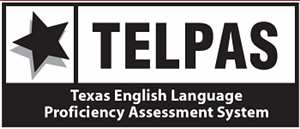- PSTEM Academy
- TELPAS
Assessments
Page Navigation
-

TELPAS: English language proficiency assessments are federally required to evaluate the progress that English language learners (ELLs) make in becoming proficient in the use of academic English. Title III, Part A of the Elementary and Secondary Education Act (ESEA) requires states to conduct annual statewide English language proficiency assessments for ELLs in grades K–12. TELPAS assesses the English language proficiency of K–12 ELLs in four language domains: listening, speaking, reading, and writing. The TELPAS assessments are performance-based and holistically rated, with the exception of the reading assessments for grades 2–12, which are multiple-choice tests. · Grades K–1: TELPAS includes holistically rated listening, speaking, reading, and writing assessments based on ongoing classroom observations and student interactions. · Grades 2–12: TELPAS includes multiple-choice reading tests, holistically rated student writing collections, and holistically rated listening and speaking assessments. The listening and speaking assessments are based on ongoing classroom observations and student interactions. TELPAS is used, in conjunction with the State of Texas Assessments of Academic Readiness (STAAR) to show the extent to which districts and the state meet federal Annual Measurable Achievement Objective (AMAO) accountability indicators that are specific to English language proficiency and academic achievement of ELLs. Composite performance (which combines performance on listening, speaking, reading, and writing), rather than individual language domain performance, is used in TELPAS AMAO indicators. TELPAS results are also used at the student level to help teachers design instruction and plan interventions that appropriately address the student’s linguistic and academic needs.

